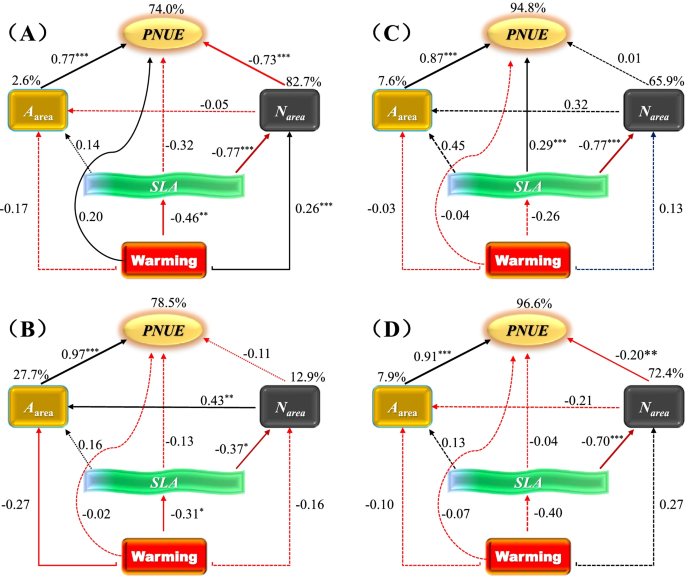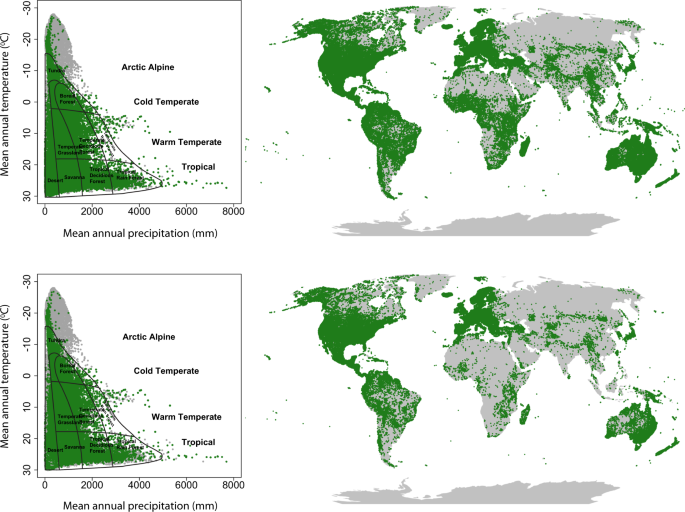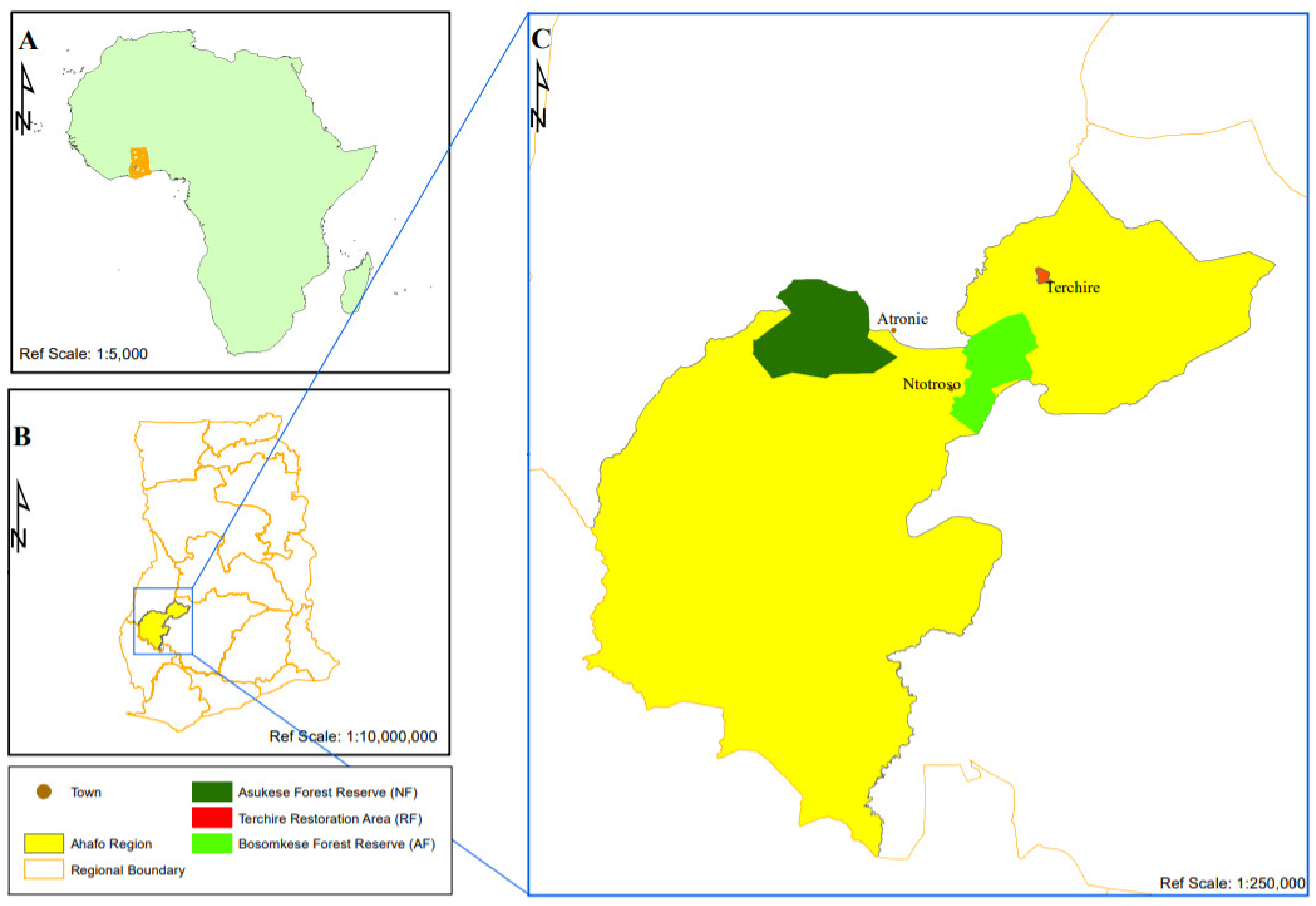Plant functional traits and types: Their relevance for a better
Por um escritor misterioso
Last updated 15 junho 2024

It is proposed here to analyse the potential and limitations of the PFTT concepts in the case of AFS in the humid tropics, notably referring to rainforest dynamics regarding succession patterns. Complex Agroforestry Systems (AFS) in the humid tropics are mixed forest-like ecosystems that often display high species diversity that makes their structure and functioning difficult to understand and simulate. Plant Functional Traits and Types (PFTT) are broadly used concepts in community and ecosystem ecology to address the responses of species to changes in the environment and/or the contribution of species to ecosystem functions. The relevance of these concepts, developed for natural ecosystems, for a better understanding of AFS is unknown but we hypothesize that they might be useful to gain a better understanding of the resilience properties of AFS and to answer the following questions: What is the role of AFS species composition in ecosystem functions? and, conversely: How do environmental changes affect that species composition, and hence AFS performance? We propose here to analyse the potential and limitations of the PFTT concepts in the case of AFS in the humid tropics, notably referring to rainforest dynamics regarding succession patterns. This analysis is based on case studies from coconut-based AFS in Melanesia and coffee-based AFS in West Africa. Plant functional traits, such as growth form, life form, phenology, and height were first used to describe these AFS. Since AFS are a result of farmers interventions, to evaluate their performance specific traits, corresponding to agronomic characteristics of species such as the production cycle, and part of the plant used, need to be considered in addition to traits considered for natural forests. (Resume d'auteur)

To harness traits for ecology, let's abandon 'functionality': Trends in Ecology & Evolution

Climatic and soil factors explain the two-dimensional spectrum of global plant trait variation

Predicting species abundance from plant functional traits: a conceptual

PDF) Plant diversity, functional traits and soil conditions of grass savannas on lateritic crusts (bowé) in south eastern Burkina Faso

Coordination of leaf functional traits under climatic warming in an arid ecosystem, BMC Plant Biology

The global spectrum of plant form and function: enhanced species-level trait dataset

Forests, Free Full-Text

The intrinsic dimensionality of plant traits and its relevance to community assembly - Laughlin - 2014 - Journal of Ecology - Wiley Online Library

Correction to: Relative Importance of Climate, Soil and Plant Functional Traits During the Early Decomposition Stage of Standardized Litter
What are functional trait-based approaches to plant ecology and why are they important? - Quora
Recomendado para você
-
 Programa de Pós-Graduação em Planejamento e Controle de Gestão – PPGCG15 junho 2024
Programa de Pós-Graduação em Planejamento e Controle de Gestão – PPGCG15 junho 2024 -
Universidade Federal de Santa Catarina · GitHub15 junho 2024
-
 PDF) Active Learning Using Protein Data Bank (PDB) Biochemical15 junho 2024
PDF) Active Learning Using Protein Data Bank (PDB) Biochemical15 junho 2024 -
 Moodle Grupos: Curso Machine Learning para Todos - IVG15 junho 2024
Moodle Grupos: Curso Machine Learning para Todos - IVG15 junho 2024 -
 8: VPL editor with Hello World! program.15 junho 2024
8: VPL editor with Hello World! program.15 junho 2024 -
 Associations of and gene polymorphisms with alcohol dependence and15 junho 2024
Associations of and gene polymorphisms with alcohol dependence and15 junho 2024 -
 Caderno de Resumo 2010 - Semana de Letras - UFSC15 junho 2024
Caderno de Resumo 2010 - Semana de Letras - UFSC15 junho 2024 -
 Social software in Higher Education: Pedagogical Models and15 junho 2024
Social software in Higher Education: Pedagogical Models and15 junho 2024 -
 Livro Digital III SICOM by Sigmo Pessoa Ufsc - Issuu15 junho 2024
Livro Digital III SICOM by Sigmo Pessoa Ufsc - Issuu15 junho 2024 -
Full article: The application of medical professional English15 junho 2024
você pode gostar
-
![Black Luster Soldier - Envoy of the Beginning [CT10-EN005] Super Rare](https://gameskingstore.com/cdn/shop/products/838af5da-e846-58d5-afeb-c26fe267482a_800x.png?v=1686780919) Black Luster Soldier - Envoy of the Beginning [CT10-EN005] Super Rare15 junho 2024
Black Luster Soldier - Envoy of the Beginning [CT10-EN005] Super Rare15 junho 2024 -
 Becky Lynch And Still Wwe Nxt Women's Champion 2023 Shirt by Macoroo - Issuu15 junho 2024
Becky Lynch And Still Wwe Nxt Women's Champion 2023 Shirt by Macoroo - Issuu15 junho 2024 -
Duda rubert dançando #duda #ruyter #jonvlogs #dudarubert15 junho 2024
-
/cdn.vox-cdn.com/uploads/chorus_image/image/47051282/mkx_canceled.0.0.jpg) Mortal Kombat X for PlayStation 3, Xbox 360 canceled - Polygon15 junho 2024
Mortal Kombat X for PlayStation 3, Xbox 360 canceled - Polygon15 junho 2024 -
 dale moreno edits kimberly|TikTok Search15 junho 2024
dale moreno edits kimberly|TikTok Search15 junho 2024 -
 Kimi no Suizou wo Tabetai (I Want To Eat Your Pancreas15 junho 2024
Kimi no Suizou wo Tabetai (I Want To Eat Your Pancreas15 junho 2024 -
 Men In Black (Mib): Alien Crisis - Xbox 360 no Shoptime15 junho 2024
Men In Black (Mib): Alien Crisis - Xbox 360 no Shoptime15 junho 2024 -
 i.ytimg.com/vi/kifMYUpGeA8/hqdefault.jpg15 junho 2024
i.ytimg.com/vi/kifMYUpGeA8/hqdefault.jpg15 junho 2024 -
 Personagem Do Sonic: comprar mais barato no Submarino15 junho 2024
Personagem Do Sonic: comprar mais barato no Submarino15 junho 2024 -
 Xadrez Movimento da Torre15 junho 2024
Xadrez Movimento da Torre15 junho 2024
